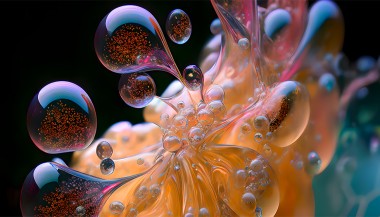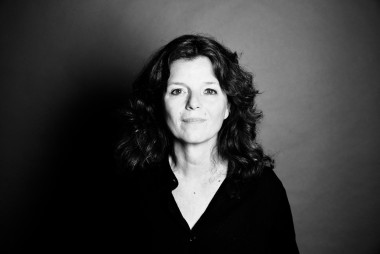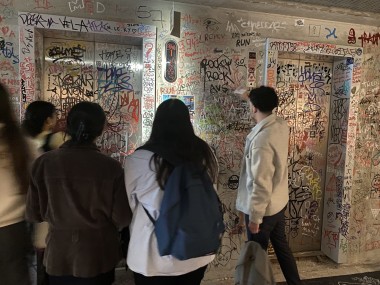
Construction
Construction
The completion of the Grand Palais in just three years, in time for the opening of the Universal Exhibition, was a huge challenge and the construction site was of epic proportions. Yet despite a number of nasty surprises and delays, construction was completed to schedule. The result was a triumph: a true architectural feat combining highly dissimilar materials: steel, stone and glass.
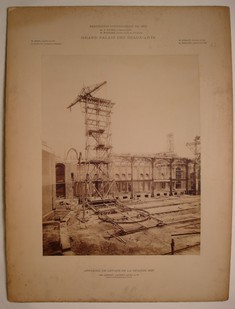
Although trial holes were bored to test the resistance of the soil it was only when work began on the foundations that it became apparent that the land on the Seine side of the building would not support the weight of the building. There was no choice but to build on piles: 3,400 oak piles were used, but the whole project was delayed by eight months, and costs overran significantly.
When the foundations were completed, the masons could go to work. The task was gigantic: the facade overlooking today's avenue Winston-Churchill alone required 17,000 m3 of stone, 10,000 m3 of rubble and 2 million bricks. To win the race against time, the most modern techniques were used: rail and gantry cranes, steam engines, and sheer muscle. Plenty of it: at the peak of the construction work, there were 1,500 workers. Strikes for higher wages broke out, putting further pressure on the bid to meet the deadline.
8,500 tons of steel
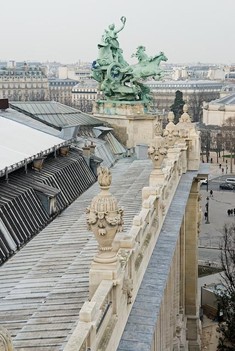
The finishing touch was provided by the decoration. Forty contemporary artists were selected by the architects to execute a large number of statues, polychrome friezes in mosaic and ceramic, while ornaments and monumental groups provided the final embellishments. Though the facades tended towards Classicism (the colonnades being reminiscent of the Louvre, for example), the sculptures were unequivocally baroque. The most remarkable are Georges Récipon's famous quadrigas decorating the corners of the main facade: Harmony triumphing over Discord, on the Seine side, and Immortality outstripping time.
Finally, the facade inscription proudly proclaimed the mission and ambition of the Grand Palais: "This monument has been dedicated by the Republic to the glory of French Art".

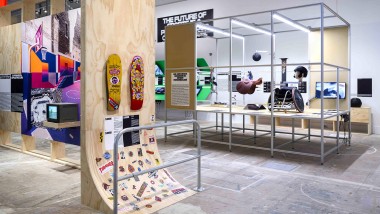
Le match parfait dont la presse parle est au Musée du Luxembourg !
Article - 25 avril 2024